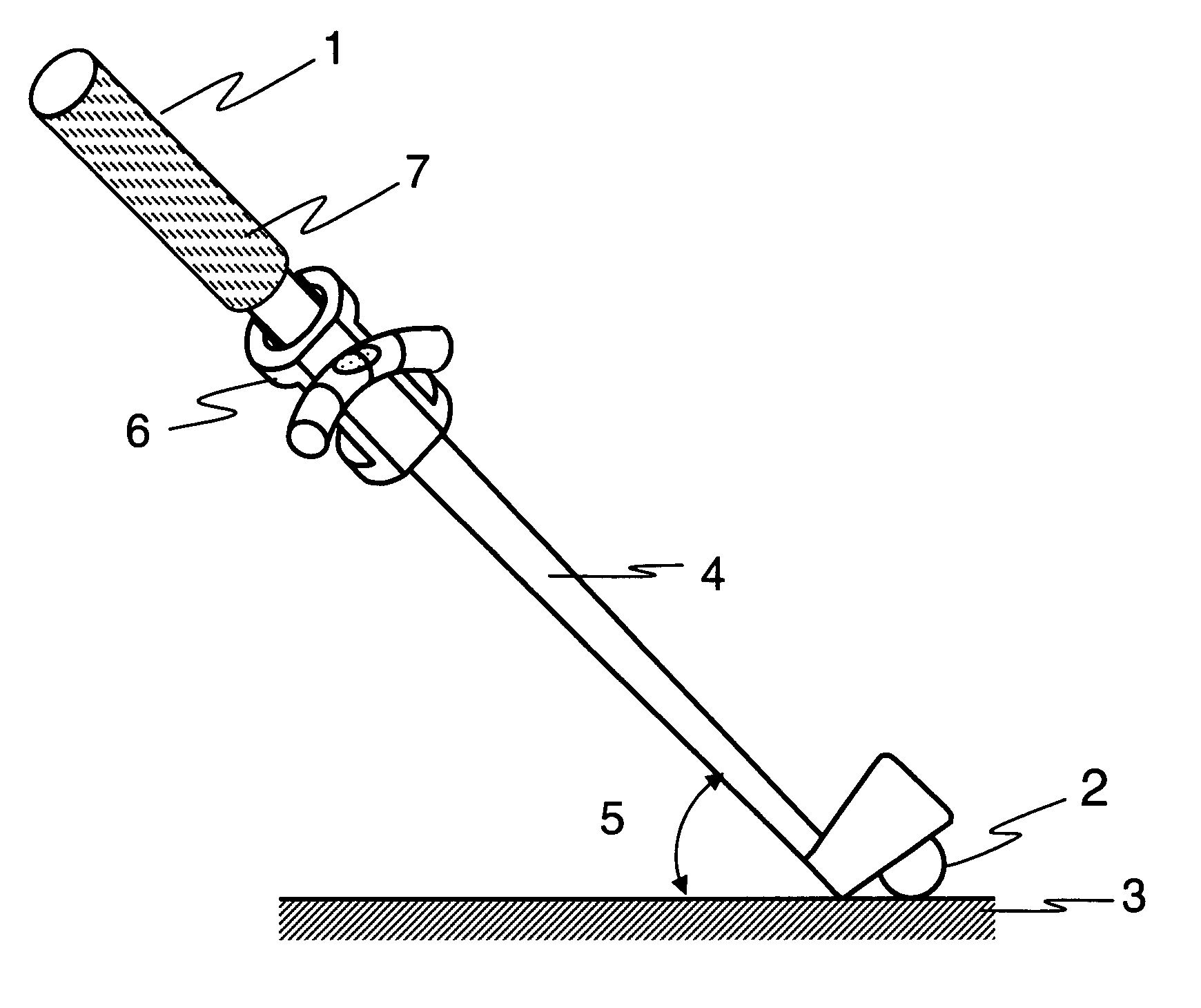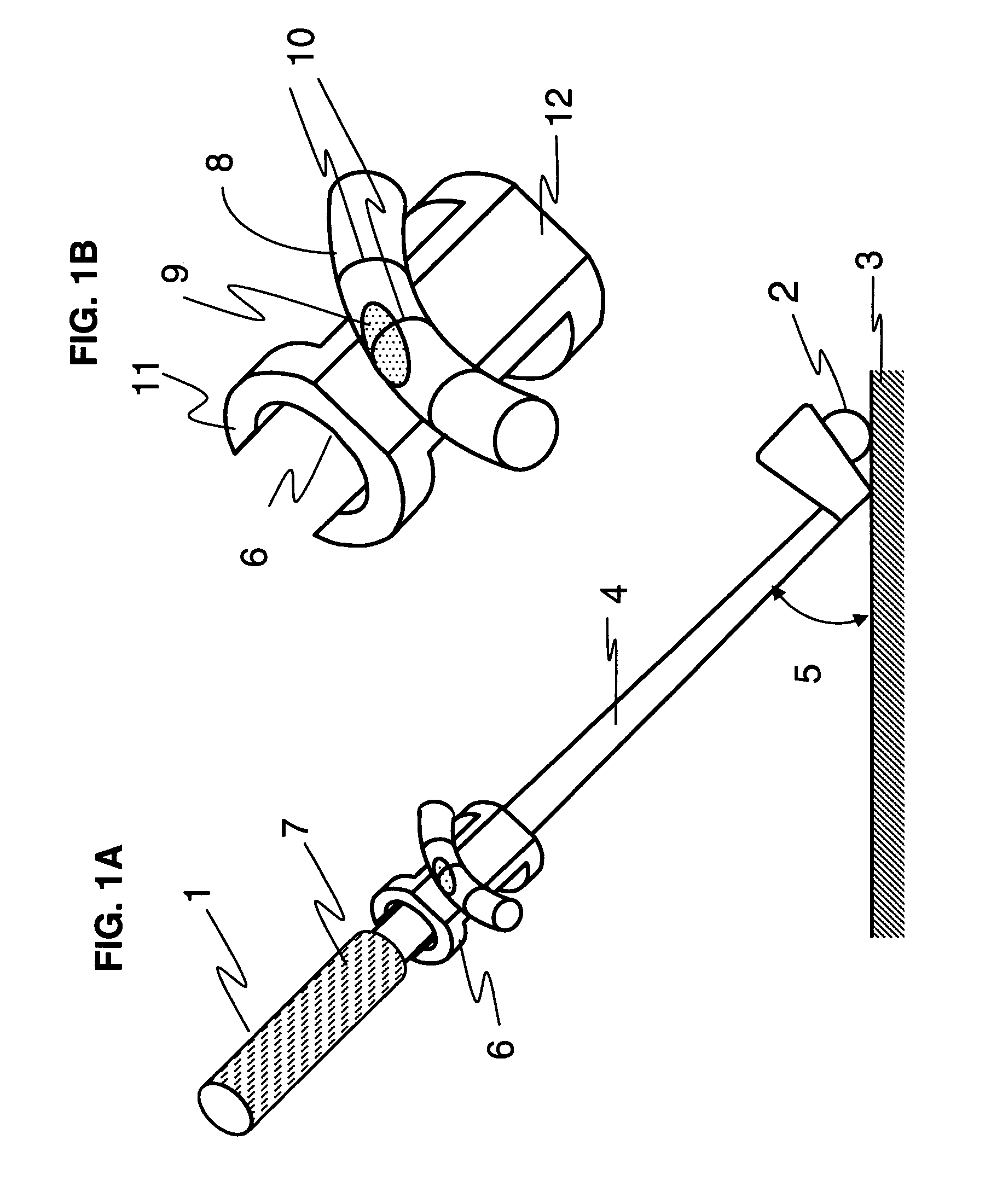Method and apparatus for executing repeatable golf swings
- Summary
- Abstract
- Description
- Claims
- Application Information
AI Technical Summary
Benefits of technology
Problems solved by technology
Method used
Image
Examples
Embodiment Construction
[0032]FIG. 1A is a schematic of the entire system. The golf club, 1, is shown in the normal position as it addresses the ball, 2, lying on the ground, 3, prior to starting the swing. The club shaft, 4, makes an angle, 5, with the ground, 3. The alignment assembly, 6, attaches to the club, 1, by sliding it up along the tapered shaft, 4, until the alignment assembly, 6, creates an interference fit with the club, 1. The point where the interference fit occurs may be on the shaft, 4, or the grip, 7.
[0033]The ability to quickly install and remove the alignment assembly, 6, is important during actual play because the golfer may not want the alignment assembly, 6, to remain on the club shaft, 4, when he places the club, 1, back into his bag. At the user's option, the alignment assembly, 6, may be installed on the club shaft, 4, by either inserting the small end of the club shaft, 4, into the opening of the alignment assembly, 6, then sliding the alignment assembly, 6, up the club shaft, or...
PUM
 Login to View More
Login to View More Abstract
Description
Claims
Application Information
 Login to View More
Login to View More - R&D
- Intellectual Property
- Life Sciences
- Materials
- Tech Scout
- Unparalleled Data Quality
- Higher Quality Content
- 60% Fewer Hallucinations
Browse by: Latest US Patents, China's latest patents, Technical Efficacy Thesaurus, Application Domain, Technology Topic, Popular Technical Reports.
© 2025 PatSnap. All rights reserved.Legal|Privacy policy|Modern Slavery Act Transparency Statement|Sitemap|About US| Contact US: help@patsnap.com



